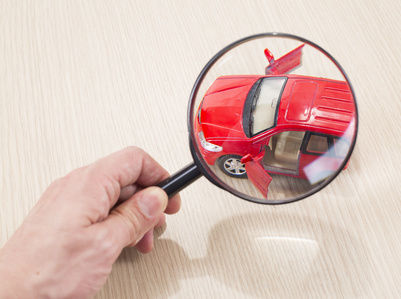Buying a Damaged Car? Here’s a Brief Inspection Guide

The profitability of your decision to buy a damaged car largely depends on the overall cost of the repairs required to make it road-ready. To understand the nature and scope of jobs, you need to know the extent of the damages the vehicle has sustained. Therefore, before putting your money down, thoroughly inspect the car you are contemplating to buy. Though we cannot say for others, Auto Bid Master allows buyers to visit the company’s yards and inspect the vehicle of their choice. To help ensure you cover all critical areas and make an informed decision, we have also put together this brief inspection guide, covering five focus areas that command special attention. Take a look.
1. Clutch
It is common for the clutch to wear down due to continuous usage and rough handling. The biting point for a malfunctioning clutch is usually close to maximum levels and if you go for such a vehicle you’ll need to replace the component. Additionally, while test driving the car engage the handbrake and pull the clutch out if the engine doesn’t stops but the revs increase the car needs a new clutch. Last but not the least, any fluctuation in the engine’s rev (RPM) even when the car’s speed is constant indicates clutch wear and you may need to replace the assembly if you buy the vehicle.
2. Condition of Tires
Take a closer look at the tires to make sure the wear is uniform. One sided wear (on the inner or outer half) is an indication that the axles of the car are misaligned. Additionally, don’t forget to perform the cent test: place a cent head first into the tread grooves across the tire, one at a time. If the top of Lincoln’s head is visible every time, there are good chances that the treads are worn and you’ll need to replace the tires if you buy the car. Last but not the least, check the sidewall and tread for cracks and bulges that may develop due to continuous exposure to UV rays and usage at inapt air pressures.
3. Hood
Check for signs of dents, damage, and rust under the hood. Additionally, ensure all fluid reservoirs are functioning properly and there are no leaks. The hoses of the radiator should not be too soft or brittle, or have any cracks. Check the engine block for signs of dark brown residue. Such stains usually point towards a possible leakage in the gasket. Check if the engine emits any foul smell, as it can be a sign of larger problems. Make sure there is no foam residue on the inner part of the oil filler cap and the fluid sticking to the transmission dipstick is not burnt/brown in color. Last but not the least, check the timing belt and get it replaced on priority, if required.
4. Interiors
Get inside the car and check the upholstery and the seats for signs of stains, rips, or any other damage. Turn on and check the air conditioning, the lights, the parking sensors, and the back parking camera to ensure they’re functional. Additionally, don’t forget to check the odometer to find out the car’s mileage. Lastly, check all power switches, including windows and make sure everything is in order, and if it’s not, factor in the cost of the repairs.
5. Exhaust System
Black spots under the exhaust system indicate oil leakage and is not good news as the issue may require expensive repairs. Run your fingers over the exhaust, and if you see a thick layer of greasy grime, then you may need to invest some extra dollars to get rid of the issue. The issue is caused when either engine oil or unburnt fuel start getting channeled through the exhaust, and the overall cost of repair will be difficult to estimate without a thorough check by a professional.
6. Steering Assembly
The steering assembly is one of the most used components in any vehicle, and its cost of replacement can run into hundreds and even thousands of dollars. It is, therefore, important to check the assembly of the car you think of buying. Start by checking the steering fluid level, and move on to the steering pump belt. If possible, jack the vehicle’s front end and ask someone to turn the steering wheel. If you notice any worn parts or hear a screeching noise, you might be in for some major repairs.
Few Last Words
So these were some of the inspection tasks you can perform to assess the cost of the repairs required. It is also advisable that you hire a mechanic to check the vehicle and advise you accordingly. In addition to following the above tips, make sure you go through all the details concerning the vehicle before planning an inspection. If you have any questions or wish to learn more about any of the damaged cars for sale listed with us, feel free to call us at +1 (503) 298-4300, Monday – Friday (6am – 4pm PDT). Register today to get amazing deals!
- The Advantages of Salvage Car Parts - November 3, 2025
- Buying Salvage Cars: What to Expect on Auction Day - May 22, 2025
- Is Buying a Hail Damage Car Worth It? A Detailed Guide - December 2, 2024